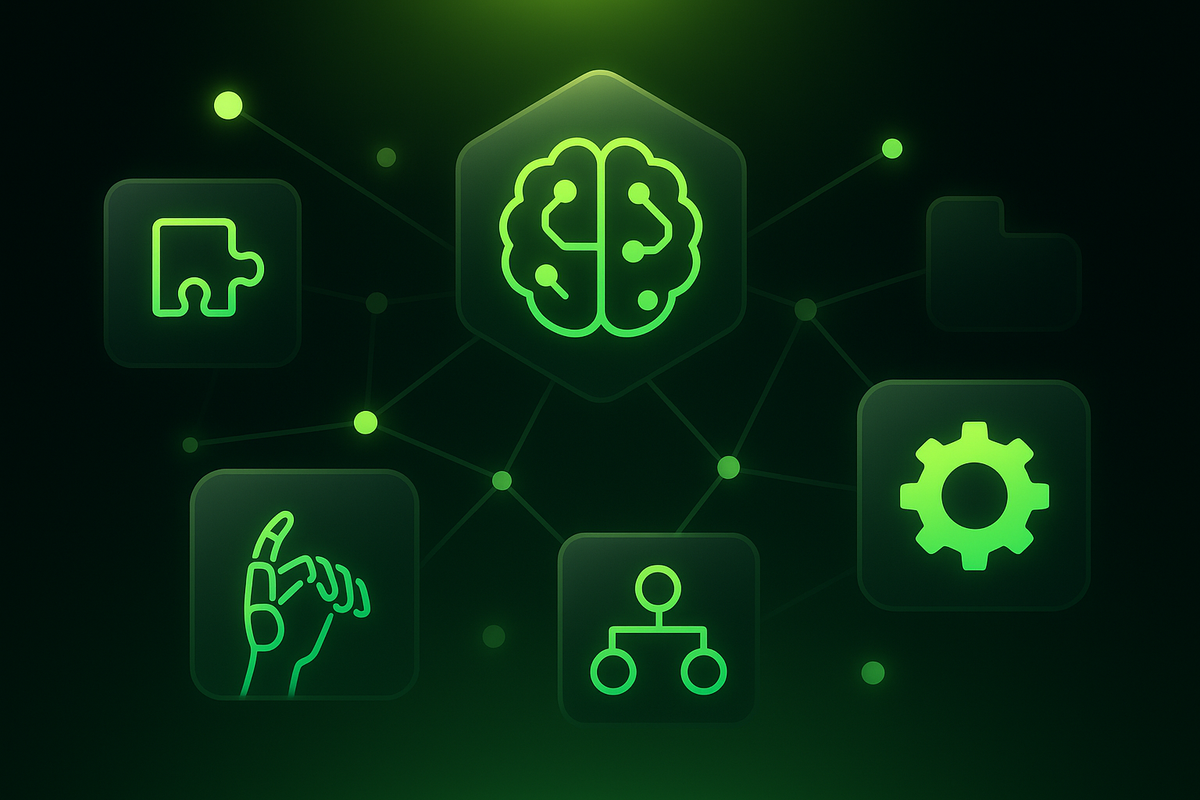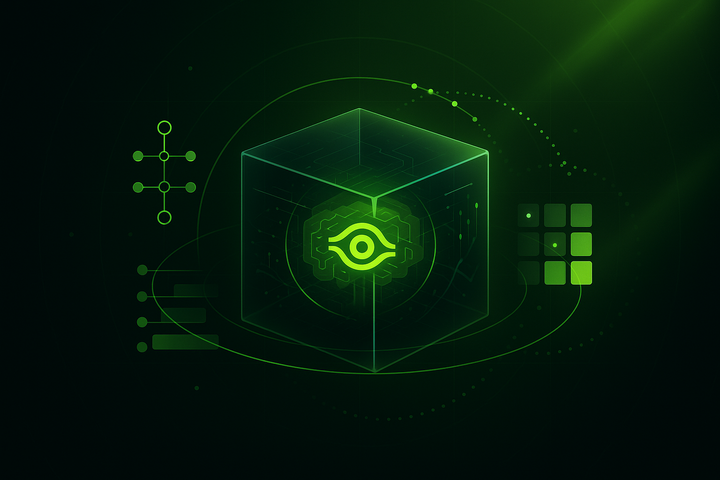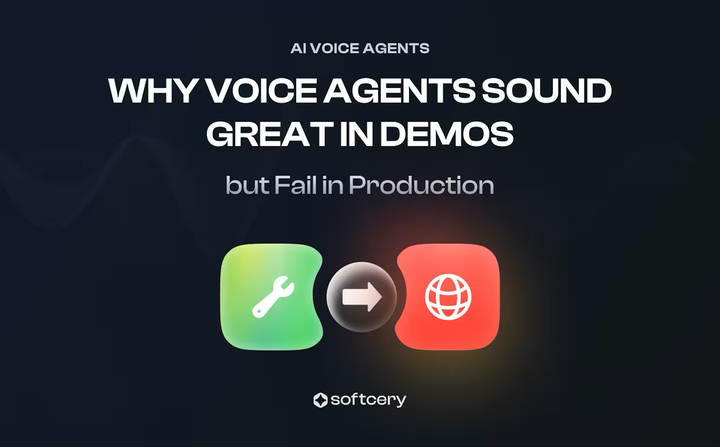
AI Agent LLM Selection: Cost, Latency, Reliability Tradeoffs
The AI agent prototype works. Demos go well. Then production reveals the problem: $47 per conversation. Or the agent feels sluggish. Or it fails unpredictably. These aren't three separate problems. They're three dimensions of the same decision: which LLM to use.
The AI agent prototype works. Demos go well. Then production reveals the problem: $47 per user conversation. Or the voice agent feels sluggish – users notice the 2-second pauses. Or it handles 80% of scenarios perfectly but fails unpredictably on the other 20%.
These aren't three separate problems. They're three dimensions of the same decision: which LLM to use.
Model selection is one decision in a larger system. Get the complete framework in our AI Launch Roadmap – covering architecture patterns, evaluation strategies, deployment checklists, and cost optimization techniques for shipping production AI agents.
The Three-Dimensional Tradeoff
Every LLM gives three knobs: cost, latency, reliability. Maxing out all three is impossible.
Cost: Token pricing varies 100x between models. Gemini Flash costs $0.15 per million input tokens. Claude Opus costs $15 per million. Same API call, vastly different economics.
Latency: Generation speed varies 3x. Gemini Flash generates 250 tokens per second. Claude Sonnet generates 77 tokens per second. For voice agents where every millisecond matters, this difference is architectural.
Reliability: Output consistency varies between models. Claude Sonnet produces more predictable outputs than competitors, especially at lower temperatures. Other models show higher variance across equivalent runs. For production systems requiring deterministic behavior—particularly multi-agent workflows—this consistency matters. Random failures destroy user trust faster than consistent mediocrity.
The question isn't "which model is best." It's which dimension matters most, and which tradeoffs are acceptable.
Diagnosing Your Constraint
The Cost Problem
Symptoms: Prototype costs scale linearly with users. Current model costs make target price point impossible. Burning through runway on inference costs.
Diagnostic: Calculate cost per user interaction. If it's >$0.50 and the target is <$0.10, there's a cost problem, not a latency or capability problem.
At 10,000 daily users with 5 exchanges per session, Claude Sonnet costs approximately $2,250 per day. Gemini Flash costs approximately $22 per day for the same volume. Unit economics shift from unviable to sustainable.
Models to consider: Gemini 2.5 Flash ($0.15/M input), GPT-4o mini ($0.15/M input).
The Latency Problem
Symptoms:
- Voice agents: Users experience noticeable pauses (>800ms)
- Chat agents: Users send follow-up messages before response arrives (>2s)
- Real-time applications: Response speed affects core experience
Diagnostic: Measure time-to-first-token. If LLM processing is >60% of total latency, model choice is the bottleneck.
Voice agent latency breaks down predictably: ASR takes ~50ms, LLM processing takes ~670ms, TTS takes ~280ms. Total: ~940ms.
The LLM is 71% of the problem. Switching from Claude Sonnet (77 tokens/sec) to Gemini Flash (250 tokens/sec) reduces LLM latency by 60-70%.
Chat agents tolerate up to 2 seconds before users notice. Voice agents need sub-800ms end-to-end (sub-500ms ideal). This fundamentally changes model selection.
Models to consider: Gemini 2.5 Flash (250 tokens/sec, 0.25s time-to-first-token).
The Capability Problem
Symptoms: Agent fails on complex scenarios despite prompt engineering. Reasoning breaks down on multi-step tasks. Output quality varies across runs – works in testing, shows unpredictable failures in production.
Diagnostic: The hard part – is it model ceiling, implementation, or output variance? Test with a more powerful model (Claude Sonnet 4.5, GPT-4.1). If problems disappear, it's model capability. If consistency improves but quality stays acceptable, it was variance. If problems persist, it's architecture or prompting.
Note: Set temperature=0 and use structured outputs (JSON mode, schema validation) to reduce variance before concluding the model itself is the problem.
A legal document analysis agent failing to extract nested clauses might need Claude's reasoning depth. A customer support chatbot answering FAQ questions probably doesn't.
Models to consider: Claude Sonnet 4.5 (77.2% software engineering benchmark, highest consistency), GPT-4.1 (90.2% MMLU general knowledge).
Model Selection Matrix
Voice Agents
Hard constraint: Sub-800ms end-to-end latency. LLM is ~70% of this.
Recommended: Gemini 2.5 Flash
- 250 tokens/sec generation
- 0.25s time-to-first-token
- $0.15/M input tokens
Alternative: GPT-4o (if better reasoning is needed and slightly higher latency is tolerable).
Architecture note: Streaming is mandatory. Semantic caching can reduce common responses to 50-200ms.
Chat Agents (Complex Reasoning)
Primary need: Reliability and sophisticated reasoning.
Recommended: Claude Sonnet 4.5
- Most predictable outputs across runs (especially important for production systems)
- 77.2% on software engineering benchmarks
- Best for multi-step logic, code generation, structured output
Cost: $3/M input, $15/M output Latency: 77 tokens/sec (acceptable for chat, problematic for voice)
Use cases: Legal analysis, technical documentation, code generation, complex problem-solving.
Why consistency matters here: Multi-step workflows and agent systems amplify variance. One unpredictable output early in the chain cascades into downstream failures. For production systems requiring deterministic behavior, Claude's lower variance reduces this risk.
Chat Agents (High Volume, Simpler Tasks)
Primary need: Unit economics at scale.
Recommended: Gemini 2.5 Flash
- 100x cheaper than premium models
- Fast enough for good UX (250 tokens/sec)
- Suitable for straightforward Q&A, content generation, classification
When to upgrade: If accuracy drops below acceptable threshold or reasoning failures increase.
Use cases: Customer support FAQ, content moderation, simple data extraction, basic recommendations.
Full Model Comparison: What We've Tested
The recommendations above cover most production scenarios. But founders often ask: "What about model X?" or "Should I consider open-source?"
We've tested 12 models in production and staging environments. Here's what matters for AI agents.
Key Insights from Testing:
Consistency beats peak performance. Claude Sonnet doesn't always score highest on benchmarks, but produces more predictable outputs across runs than competitors. For production systems—especially multi-agent workflows—this reduced variance matters more than occasional brilliance. Temperature=0 and structured outputs help all models, but baseline consistency still varies.
Speed compounds. Gemini Flash's 250 tokens/sec vs Claude's 77 tokens/sec means 3x faster responses. For voice agents, this is the difference between viable and unusable.
Open-source has hidden costs. Llama 3.3 is "free" but requires infrastructure, DevOps, monitoring, and ongoing model updates. Calculate total cost of ownership, not just API fees.
Specialized models rarely justify their cost. GPT o1 sounds appealing for "advanced reasoning" but costs 4x GPT-4o and runs slower. Test whether Claude Opus solves the problem first.
Economy models are production-ready. Gemini Flash and GPT-4o mini aren't just for prototyping. They handle real production workloads when tasks match their capabilities.
Architecture Patterns for Model Flexibility
Model selection shouldn't be hardcoded. Build for switching from day one.
Pattern 1: Router-Based Selection
Route requests to different models based on complexity.
- Simple queries → Gemini Flash (fast + cheap)
- Complex reasoning → Claude Sonnet (smart + consistent)
- Multimodal tasks → Gemini Pro (best at images)
Implementation: Classification step determines complexity. Rule-based routing works (conversation length, keywords, user tier). ML-based routing works better but requires training data.
An e-commerce agent might route "What's your return policy?" to Gemini Flash but "I need help negotiating a bulk enterprise contract with custom terms" to Claude Sonnet.
Pattern 2: Abstraction Layer
Config-driven model selection. Swap models without code changes.
# Not this (hardcoded)
response = anthropic.messages.create(model="claude-sonnet-4")
# This (configurable)
response = llm_client.generate(task="reasoning", config=model_config)Model choice becomes deployment config, not application code. Testing new models means changing an environment variable, not refactoring.
Pattern 3: Fallback Chains
Primary model fails or times out → automatic fallback to alternative.
- Try Claude → fallback to GPT-4o → fallback to Gemini Flash
- Graceful degradation instead of hard failures
LLM APIs have outages. OpenAI, Anthropic, and Google have all had downtime in 2025. Single-model dependency means the app goes down when the provider does. Fallback chains mean reduced quality during outages, not total failure.
Cost Optimization Beyond Model Choice
Picking a cheaper model is obvious. These strategies aren't.
Semantic Caching
Cache responses for semantically similar queries, not just exact matches.
Traditional caching: "What's your return policy?" gets cached. "Can I return items?" misses cache.
Semantic caching: Both questions match via vector embeddings. Second query returns cached response in 50-200ms instead of 1-2 seconds, at 75% lower cost.
ROI: High for customer support agents, FAQ bots, repetitive workflows. A support agent answering variations of the same 20 questions can cut costs by 60-80%.
Prompt Optimization
Shorter prompts = direct cost savings, multiplied across every request.
A 77% token reduction in the system prompt cuts costs by 77% on that portion. At 100,000 daily conversations, this saves 8 million tokens per day.
Approach: Prompt distillation. Use an LLM to compress verbose prompts while maintaining intent. Test compressed version against original for quality regression.
Batch Processing
OpenAI offers 50% discount for non-urgent batch requests.
Use cases: Overnight report generation, bulk content creation, non-real-time analysis.
Not applicable: Real-time chat or voice. Many AI systems have batch components – nightly summaries, weekly analytics, bulk content updates. Route these through batch APIs.
Two-Tier Processing
Use cheap model for draft, expensive model for refinement (only when needed).
Gemini Flash generates initial customer support response → quality check flags low confidence or complexity → escalate to Claude Sonnet for refinement.
Total cost often lower than Claude-only. Most responses don't need escalation. Output quality nearly equivalent. Latency slightly higher, but acceptable for non-real-time use cases.
When to Switch Models (and When Not To)
Model switching isn't free. Architecture makes it possible; these guidelines make it smart.
Good Reasons to Switch
Cost reduction with acceptable tradeoff: The cheaper model handles 90%+ of cases adequately. Cost savings justify the 10% degradation. Example: Claude → Gemini for customer support where success rate stays >95%.
Latency requirements changed: Voice feature added to chat product (now need <800ms). User growth exposed latency bottleneck. Premium tier justifies faster model.
New capabilities required: Current model hits ceiling on reasoning tasks. Competitive feature requires better model. Example: Adding code generation capability (Gemini → Claude).
Bad Reasons to Switch
Chasing benchmarks without measuring impact: Model X scores 2% higher on MMLU. But users can't tell the difference. Switching costs (re-prompting, testing, deployment) outweigh gains.
Optimizing prematurely: "Gemini is cheaper, let's switch" before measuring whether current cost actually threatens unit economics, or testing whether Gemini handles the use case.
Following hype: New model released → immediate switch without testing on actual data, actual use cases. Benchmarks don't predict production performance. GPT-4.1 has higher knowledge scores than Claude, but Claude outperforms on software engineering tasks.
The Switching Checklist
Before committing to a model change:
- Measure current performance on actual metrics (not benchmarks). Success rate, user satisfaction, task completion rate.
- A/B test new model with real traffic (not synthetic tests). 10% of users for one week minimum.
- Calculate total switching cost (re-prompting, testing, monitoring setup, team time). Include hidden costs.
- Set rollback criteria (at what failure rate does the team revert?). Define before deploying.
- Plan gradual rollout (10% → 50% → 100%, not big bang). Monitor metrics at each stage.
Model Selection Is Architecture, Not Procurement
The question isn't which LLM to use. It's how to build the agent so LLMs can be changed without rebuilding.
Start with the model that solves the immediate constraint:
- Cost problem → Gemini Flash
- Latency problem → Gemini Flash
- Capability problem → Claude Sonnet
But architect for switching. The "best" model today won't be the best model in six months. Models evolve in weeks, not years. Vendor lock-in creates obsolescence risk.
Router patterns, abstraction layers, and fallback chains aren't over-engineering. They're production-grade architecture. 78% of enterprises use multi-model strategies for exactly this reason.
Model choice is 30% of what makes a production AI agent work. The other 70% – prompt engineering, caching strategy, error handling, evaluation framework, deployment architecture – determines whether the agent actually ships and scales.
Model selection is one decision in a larger system. Get the complete framework in our AI Launch Roadmap – covering architecture patterns, evaluation strategies, deployment checklists, and cost optimization techniques for shipping production AI agents.



Comments